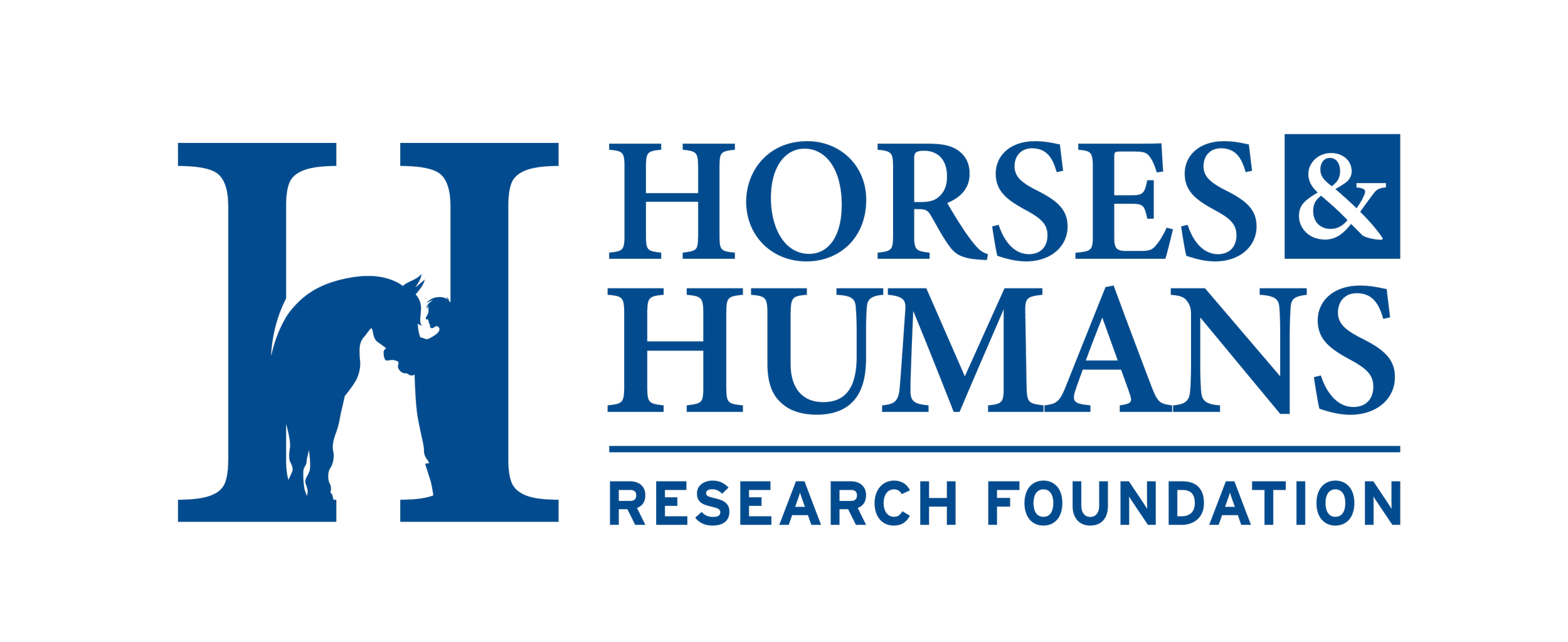Trauma and horses
Commentary by Nancy Coyne, MD, a psychiatrist with 45 years of experience. Member of the Board of Directors of Horses and Humans Research Foundation.
September 22, 2020
Horses are geniuses at connection. Their herd experience and exquisitely sensitive neuroception helps them create safe space in a dangerous world.
People suffering from trauma need connection, trusting relationships, and safe space to heal. The therapist’s first task is to offer a safe, nonjudgmental connection, a peaceful protected experience where the patient can feel seen and heard, can calm down her hyper-vigilant or frozen nervous system, let down her guard, and begin to experience feeling again. The inclusion of a therapy horse or two in the healing team makes it easy. The horse engages with the human, nuzzling, following, and sniffing out emotions, helping the patient feel and see herself. Brings her into the present moment fully. Patients describe feeling calm and present, often crying with sadness or joy. It looks like magic.
Without exploring all the story in detail, the horse goes right to the heart of the matter. How is the trauma living in your body? Oh, you're holding your breath? The horse yawns or snorts, showing how to release breath, emotion, and body tension.
The horse works through the autonomic nervous system to energetically help balance the patient’s hyper-vigilant (overly active sympathetic) or shut down (dorsal vagal) autonomic state. The horse’s calm, balanced autonomic nervous system entrains the patient’s nervous system energetically. Like tuning a piano. The patient feels calm and energized. In that calm alert state, people can feel/know and explore how the trauma lives in their bodies in the present. How it is affecting their lives. And most important they can explore how they can do life differently?
There are several scientific study areas that support the therapeutic effects of horses for humans. HeartMath heart rate variability studies show that coherence happens often (balanced autonomic state) when horses and humans connect. Barbara Rector and Dr. Ann Baldwin’s work has corroborated and expanded this. The work of Stephen Porges and others on Polyvagal Theory offers a good framework for understanding how trauma affects physiology and how people can learn to emerge from freeze, flight, or fight to social engagement and calm presence.
The role of talk therapy has been both over and undervalued. The work of modern trauma therapists (van der Kolk, Ogden, et al, and Shapiro) emphasizes the importance of discovering how trauma lives in the body, in the now. Releasing it with breath and movement and emotion. And then, most importantly, practicing new ways to be in the world. Talking about the story is helpful when it serves those purposes, relieves shame, helps the person to have compassion for themself and others. It is not useful to talk over and over about the trauma experience (retraumatizing) and it is not useful to only talk and ignore the body sensation and emotion.
The contribution of the horse is to facilitate safe connection, calm the human’s nervous system, help open the heart, foster presence, enlivenment, compassion, and awareness while also teaching boundary setting, embodied awareness, empowerment, and partnership. We don’t pay them nearly enough!

